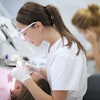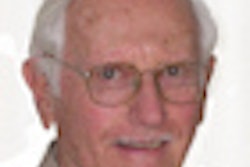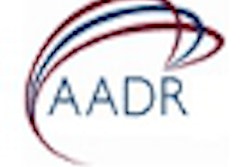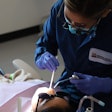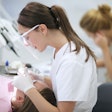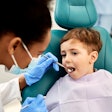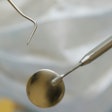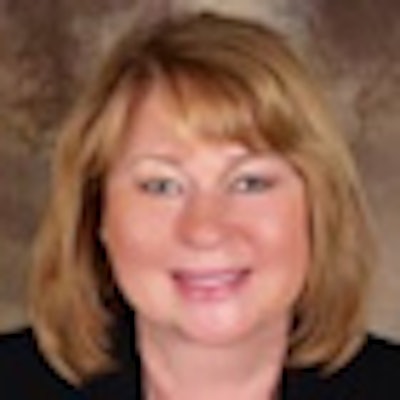
I read with interest the article posted last week on DrBicuspid.com by Jay W. Friedman, DDS, MPH, entitled "Is the ADHA midlevel provider model fair to hygienists?"
Clearly, the issue of midlevel oral health providers is complex, and there are many different potential solutions and workforce models being proposed to address the access to care crisis. I do feel, however, that there are a few points that Dr. Friedman raises about the American Dental Hygienists' Association's (ADHA) advanced dental hygiene practitioner (ADHP) model that I must address.
 Pam Quinones, RDH, president, American Dental Hygienists' Association
Pam Quinones, RDH, president, American Dental Hygienists' Association
We need to clarify that the Minnesota advanced dental therapy (ADT) program considered and used the ADHP educational competencies, and other dental education competencies, when developing the curriculum.
Metropolitan State University has established a master's program that combines both the basic level of dental therapist education and the additional education/training needed to be an ADT. Students in this program will meet licensed requirements as a dental therapist as part of the longer curriculum that will lead to advanced practice certification after 2,000 hours of clinical practice as a dental therapist.
The educational framework for the Metropolitan State masters program is broader in breadth and depth than the legislation. Students are educated to not only perform specific oral health procedures competently, but to be competent in the care management, critical thinking, and problem-solving skills that are necessary for enhanced clinical judgment.
The integrated curriculum weaves preparation for enhanced clinical judgment throughout the 26 months. Public health, research and scholarship, clinical practice management, academic leadership, and advanced clinical skills are emphasized, practiced, and evaluated during the program. Competencies for the program were developed using ADHP competencies, ADEA competencies for the New General Dentist, and the ADA's Commission on Dental Accreditation (CODA) Standards for Dental Education for the scope of practice being proposed.
Metropolitan State admission requirements are that applicants must have a baccalaureate degree and be licensed dental hygienists. The law establishes the requirements for licensure of dental therapists and certification of ADTs, but does not dictate to the educational institutions what their admission requirements should be or how to structure their programs.
Different educational institutions may establish different types of programs as long as the programs appropriately educate students to the necessary level of competency. Integrating dental hygiene with dental therapy will allow for an increase in primary oral health care services and keep health promotion and disease prevention as the primary focus of this new practitioner.
Dr. Friedman expressed his concern about the education level required to become an ADHP. He wrote: "To enter the ADHP's two-year master's degree program, one must first have a four-year baccalaureate degree in dental hygiene. This extends the ADHP program to six academic years, compared to the proven success of training a dental therapist with a high school diploma in only two years."
The ADHP concept was first developed with the nurse practitioner educational model in mind. Patient safety and welfare was always our priority. While much attention has been paid to the clinician aspect of midlevel providers, our intent was to create a healthcare provider that functioned in a variety of roles, such as a researcher, administrator, etc. In fact, it is the comprehensive education they will receive that we feel will allow them to best serve the public in a variety of roles.
The ADHA believes that patients will benefit the most from mid-level providers who are rooted in dental hygiene, as dental hygiene-based providers can deliver both preventive and restorative care within a defined scope of practice. In fact, the ADT program in Minnesota has a unique benefit of graduating students with dual licenses -- a dental hygiene license and a dental therapy license -- making them effective in two roles of the dental team.
The ADHA believes that any mid-level provider model should include three important criteria:
- Licensure
- Graduation from an accredited education program
- The ability to provide services directly to the public
Since the issue of mid-level dental providers began, we have seen a variety of models emerge, including a blended dental hygiene/dental therapy three-year model as Dr. Friedman describes. The ADHA supports this type of workforce model, as it is indeed rooted in dental hygiene and supports a collaborative working relationship with dentists.
I would like to clarify that the ADHA is open and receptive to workforce models in addition to the ADHP model. We simply do not need to force a choice, as Dr. Friedman states, "What is gained in dental therapy is lost in periodontal therapy."
We can have both! A midlevel provider who has the education and training of a dental hygienist and a dental therapist is the best of both worlds, and no one has to choose between restorative services and periodontal services. ADHA has long been a proponent of exploring new workforce models in dentistry and has been an advocate for a number of different provider proposals.
Dr. Friedman also puts forth the idea that, as many dental hygienists pursue the midlevel provider career choice, they will leave the traditional clinical dental hygiene workforce shorthanded. He wrote: "Dental hygienists becoming dental therapists is like a zero-sum game. From the viewpoint of alleviating the dental workforce shortage, it is a wash."
According to the U.S. Bureau of Labor Statistics, the employment of dental hygienists is expected to grow by 38% from 2010 to 2020. This is much faster than the average for all occupations. In fact, with 334 entry-level dental hygiene educational programs now accredited by CODA, and with some areas of the country seeing a near saturation level of dental hygienists, new provider models and practice settings stand to benefit from a pool of ready, licensed, and highly educated dental hygienists without causing any shortage in the typical dental office setting.
We certainly thank Dr. Friedman for continuing the dialogue on new provider models, and we agree with him that the need to expand the dental workforce is undeniable. It is through the continued discussion with key stakeholders that eventually we will be able to address the oral healthcare needs of this country.
Pam Quinones, RDH, BS, is president of the American Dental Hygienists' Association.



